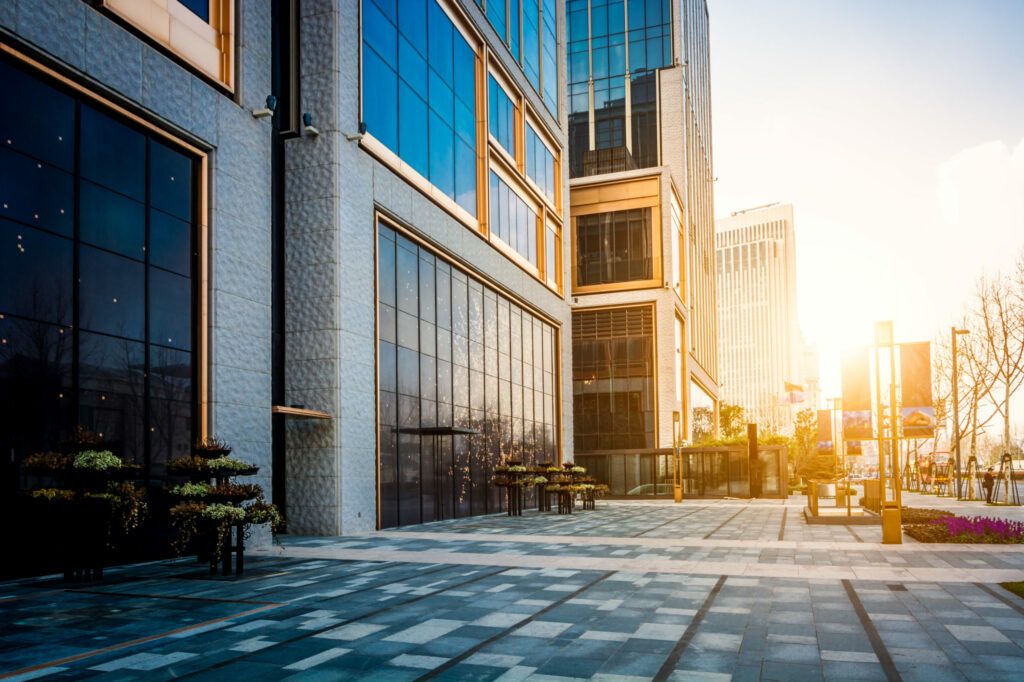In these tough times of pandemic, energy-efficient buildings play a critical role in overcoming the health & economic crises than only serving as a critical solution to the climate crisis. As the businesses worldwide are reopening, there is an increased pressure on employers and facility managers to make the building safe and protected against the coronavirus. The airborne transmission of COVID-19 was established as a possibility by the World Health Organization last year. And a research study further affirmed that the smaller virus particles can remain active in the air for up to 3 hours indoors, which makes the employees working in closed, poorly ventilated spaces more susceptible to the coronavirus.
The contact & droplet mode of infection transmission is being controlled at workplaces with measures such as frequent sanitization, staggering shifts, temperature checks, and mandatory use of face-covering put in place. The challenge, however, is slowing down the airborne transmission of coronavirus. The United States Centers for Disease Control and Prevention (CDC), Indian Society of Heating, Refrigerating and Air-conditioning Engineers (ISHRAE), and the American Society of Heating, Refrigerating and Air-Conditioning Engineers (ASHRAE) issued a detailed advisory for reducing airborne infectious aerosol exposure where it suggests some significant changes in HVAC system and operations. But, following those recommendations might make a dent in your sustainable goals for the year as it prioritizes the safety and health of the occupants over energy use.
How to make facilities safe and healthy for occupants without compromising with energy efficiency then? Here are some tips for you to improve both the safety and efficiency of your building, making it ready and flexible to the health implications that the second wave of COVID-19 may pose.
a. Install energy-efficient lighting: Light runs on energy and it’s a fact that saving energy in a commercial building is tougher than in a household. The employees forget to turn them off and each light left on adds to the energy bill, damaging the building’s efficiency. Take the load off from your employees by installing automatic lights. These light fixtures have in-built motion sensors which detect the occupancy in a room and switch on the lights. Similarly, they switch off when the room is unoccupied. The cost of these automatic light fixtures is slightly higher than the standard fixtures, but the ROI is promising.
b. Disable Demand Controlled Ventilation systems: Businesses are seen investing heavily in demand controlled ventilation systems (DCVs). The DCV systems adjust the ventilation of a room and supply the outside air based on occupancy changes detected by sensors. According to CDC, the intake of outside air in a room should be set as high as 100% which DCV systems are not naturally designed for, in hot and humid weather. To improve indoor air quality, the DCV systems will consume more energy. Therefore, it is advised to disable DCV systems and look for better and energy-efficient alternatives.
c. Upgrade the HVAC: If facility managers are planning to upgrade HVAC systems in the buildings, retrofitting MERV 13 filters can be a good start. However, these filters increase the energy use of associated fans, but the fact that it filters out the smaller virus particles is worth the energy cost. MERV 13 filters are there in newer buildings, but many older buildings have less effective filters which must be upgraded. The pumps, fans, and motors can be replaced making the entire system more efficient. If the budget allows, HVAC systems can also be re-commissioned and the control sequences can be updated. This can reduce energy use by simplify identifying the source of energy waste. The proper functioning of HVACs (as they are designed to function) without wasting energy is the need of the hour.
d. Install solar panels: Solar is one of the most viable and clean alternative energy sources that make your building truly energy-efficient. The sun can surely bring down the operating costs of the company by helping it generate power on-site from an internally free source of energy. HVAC and lighting make up about 50% of energy use in a commercial building. Rooftop solar power can meet up to at least 20 % of the electricity requirements of an office building in India.
e. Choose Smart Facility Maintenance: How contaminants flow through the air in a closed built environment depends upon the maintenance of air systems and filtration. Buildings have to be properly serviced for ensuring appropriate circulation. Humidity, temperatures, and poor filtration can lead to the increased movement of microorganisms through systems. This calls for the enhanced emphasis on indoor air quality and better ventilation to reduce the chances of viral transmission indoors. Remote Monitoring and Energy Management System that centrally controls HVAC units and lighting systems across multiple locations can empower facility managers to maintain their buildings on basis of insights and data.




